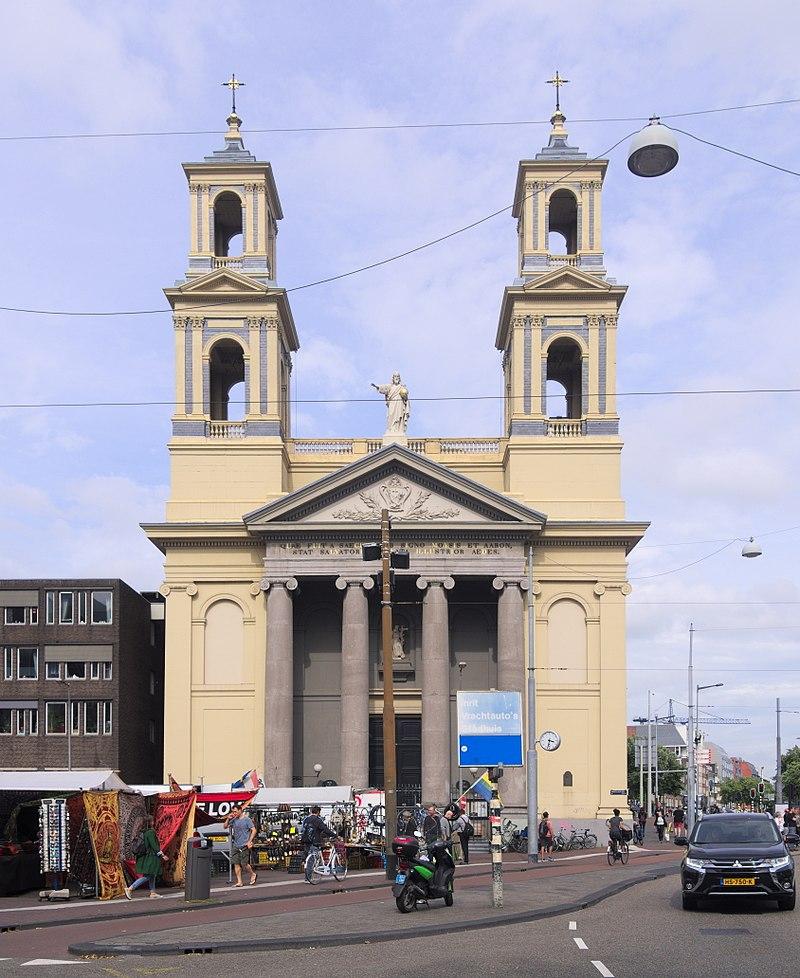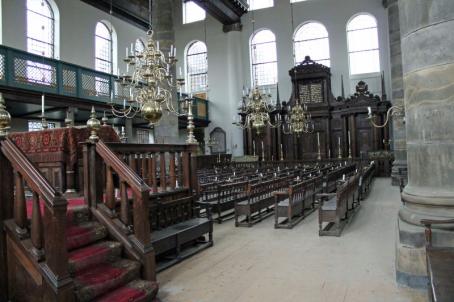Moses and Aaron Catholic Church

The Moses and Aaron Church is a Roman Catholic church originated from a clandestine church. The current building was built between 1837 and 1841 in neoclassicism style.

The Moses and Aaron Church is a Roman Catholic church originated from a clandestine church. The current building was built between 1837 and 1841 in neoclassicism style.

The church originated from a clandestine church . This was served by Franciscan fathers and was located from 1641 at the back of the current church in the house "Moyses" on the Jodenbreestraat , where a statue of Moses hung on the facade. In 1682, the adjacent house "Aäron" ( Aäron ) was also purchased by Dr. Johannes de Vroom, a physician from Breda.

The Snoge is part of a large synagogue complex. Only the Portuguese-Israelite Synagogue still fulfils its original function. The Grote Sjoel , together with the Obbene Sjoel (1685), the Dritt Sjoel (1700) and the Neie Sjoel (1750/1752) now form the Jewish Historical Museum . The interior of the Portuguese-Israelite Synagogue has been preserved, unlike that of the High German synagogues, including the copper chandeliers and holders, and dates entirely from the period of construction, which is extremely rare.

The Esnoga (Talmud Torah) Synagogue in Amsterdam is also known as the Portuguese Synagogue. It is Sephardic synagogue constructed in 1675. Esnoga means synagogue in Ladino, the traditional Judao-Spanish language of the Sephardic Jews. It is still an active place of worship and tourist destination.